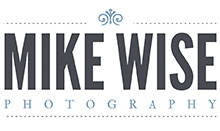High school students learn how to write essays. Students are usually encouraged to write an essay at the end of the year and also. An essay is, in general an essay that lays out the author’s argument, but the definition isn’t clear and sometimes overlaps with the structure of a poem, letter or newspaper or book, or an essay. Essays are typically classified as formal or informal. While essays can be written in an informal style or a personal style and using first person pronouns like “I” and “We” and “Your” however, formal writing is adhered to by using correct English grammar such as “a””a”, “the, “at”, the end”, “and”, and “written”. It is possible to find essays written in all three styles. However it is more common to write essays in one style, and later modified for a different.
Formal essays are written to discuss a topic. These essays follow the same structure as traditional essays. Unlike a narrative essay, the majority of formal essays don’t begin with a title, a phrase that begins with a capital “A” or word insertion into the middle of a paragraph. When you begin an essay of these types, it’s recommended to read the entire essay from start to end. Even if the main concept of the essay isn’t clear however, you can understand the structure of the essay when you carefully go through the introduction and the entire essay. To become familiar with the structure of your essay, you might be interested in reviewing it.
Informative essays, on other they are written to convince readers to reach a specific conclusion. The essayist accomplishes this by constructing an argument, drawing supporting evidence, and presenting the case for his/her argument. An informational essay’s main purpose is to convince readers to read it, not provide details. The informational essay is typically used to back up a claim in a debate on politics, or any other kind of public debate. For example, an informational essay might be used to explain why a particular politician took a particular action to achieve political power or to explain why the candidate for local office made a promise of support for a particular issue upon becoming a candidate.
The purpose of narrative essays is to describe an experience the writer has had. These essays are also known as essay on water personal essays. The essayist tells the story of experiences they have had. However this is not the sole purpose of a narrative essay. A narrative essay could be as intimate as a personal tale that is told by the writer, or an account told by someone else, much like the biography. A narrative essay could describe your childhood, your growing up in the suburbs, and even the way you live today. A narrative essay should include some facts about the events that occurred to the writer.
Both types of essays require a good argument and the ability follow a logic-based sequence. The aim of an argumentative essay or debate essay, is to present an opinion or a debate about a subject , while keeping the same arguments presented in the rest of the essay. This consistency strengthens the arguments of the author. Many professors expect students to be able to write convincing and persuasive arguments. Argumentative essays must contain all the facts and evidence to support the argument.
Textual analysis essays often ask readers to analyze a sentence, phrase, or text passage using sources from various disciplines. The student should be able to discern the meaning of the text and establish the relationship between ideas and facts. Finally, the student must be able to defend his/her opinion. An argumentative essay requires more organization skills than a textual analysis essay. In addition most texts require students to show how their opinion fits in with that of the whole field far more so than an argumentative essay does.
Comparing essays that contrast and compare contrast between two or more texts, and argue for or against them within the assigned section. Many college essays are written in this manner, but some professors require better results from their students. These professors require their students to read and comprehend the essays they write, especially if they are to compete for points. Some college teachers may view the compare and contrast essay as a way to attack, or even argument, against a person’s beliefs or positions. These essays are not suitable for use in arguments or thesis statements and are not suitable for any kind of review. Review essays are written to show why the idea is superior to other ideas.
The last kind of essay is expository essays, which are also referred to as narrative essays. Expository essays, like all other kinds of essays, must include specific details to back up their argument. However, unlike other kinds of essays, expository essays must use primary sources and rely on primary source information only. For instance, if you write about dancing in planks, you must not use a source such as an online blog or website about how plank dancing is an exercise that isn’t worth it. You should find multiple sources, including the history and definitions of the plank dance in New York City by the American Dancers Association, as also websites and blogs that provide details about the history and evolution of plank dancing.



